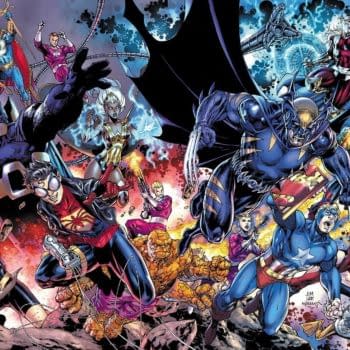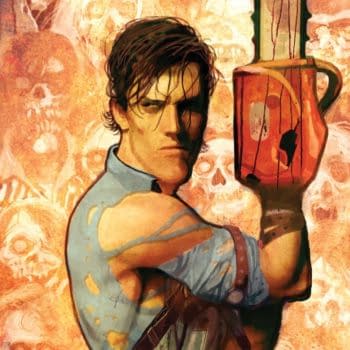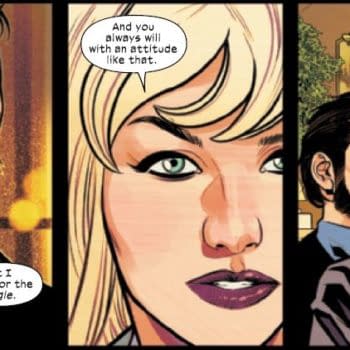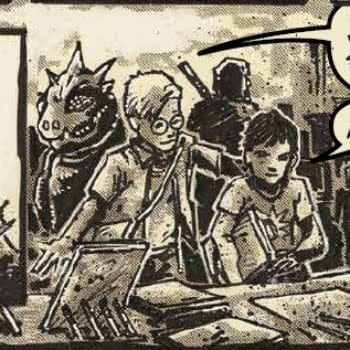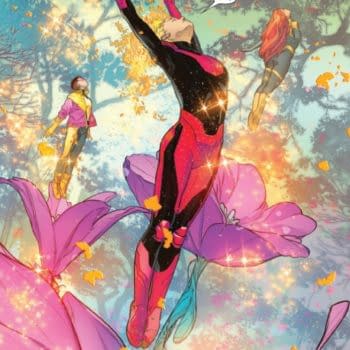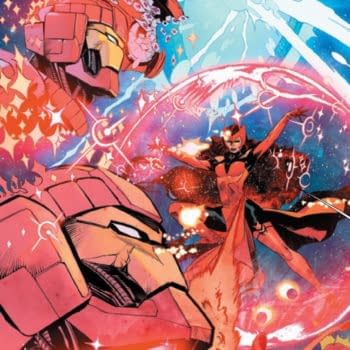Posted in: Recent Updates | Tagged: dennis o'neil, denny o'neil, denny o'neill, how to write comics and graphic novels, How to write comics and graphic novels by Dennis O'Neil
How To Write Comics And Graphic Novels by Dennis O'Neil #4 – Why Don't You Grow A Spine?

Denny O'Neil has a long history in the comics industry as both a writer and editor. He's best known for writing Green Lantern/Green Arrow and Batman, through the seventies, Spider-Man in the eighties and for editing Batman-related titles in the nineties. A widely published novelist and screenwriter, he is currently lecturing at the NYU on Writing Comics And Graphic Novels. Bleeding Cool is grateful to receive a taster of the course every week.
Has it been a week already? Since I gave you a structure for a one-issue story and promised to address the problems of serialized stories in a future installment of whatever-this-is?
Why, I do believe it has. So–
As I mentioned last time, single-issue stories are relatively uncommon in mainstream comics these days, a situation that may or may not persist. But some of what applies to a self-contained story applies equally to one that stretches from here to yonder. Mainly: keep the plot moving and keep the action interesting. Many stories will fall naturally into three sections; hence, the three-ac structure familiar to movie and theater people, a version of which I presented last week.
Now, let us agree, again, with Robert McKee, and stipulate that in the wordsmith dodge, there are no rules, only principles. Having so stipulated, I hereby present rules for writing long-form stories. Hey, I've got an idea–let's call them nonrules!
Non-rule 1: Have enough stories to fill the allotted number of pages.
Don't pad or stretch. This requires, of course, that you have at least some notion of the tales you're planning to tell when you type the opening sentence.
Non-rule 2: There must be a major change, development or reverse in every issue.
Don't mark time. It is a mistake, as John Truby warns, to merely visit your characters, look in on 'em, see what they're having for breakfast…If the scene doesn't move the plot or establish character, it has no business in your story. Each installment must have one turning point/surprise. In each, hero must accomplish something.
Example? Sure. Here's a workable structure for a four-issue mini-series:
Issue 1. Hero learns of/defines problem. Encounters first opposition.
Issue 2: Hero begins to seek solution. Opposition intensifies.
Issue 3: Hero finds solution. Opposition intensifies.
Issue 4: Hero solves problem.
Nothing here that's a Word From On High. You might want to have your protagonist find his solution in the final issue, for example. But–another note: It's a good idea to end the issue on a reason for reader to continue buying series. Put the hero in some dire predicament, present the hero with a vexatious question…You get the idea.
Beginning with issue two, it's desirable to provide enough exposition for the reader to understand immediate situation. Learn from television, those shows that open with something like, "Previously on Leo Tolstoy's War and Peace…" followed by a minute of enough stuff to allow newcomers some orientation. I'm not suggesting you do the TV thing exactly; some of you clever devils will figure out ways to incorporate the exposition into the narrative, maybe.
Which brings us to
Non-rule 3: Know the ending when you begin.
This is always important and most important in this form. Here are a couple of potential dangers.
1. When you figure out best ending, previous installments are too far along to change. This, of course, assumes that you don't have the luxury of completing the whole series before the first issue is in print. In my (admittedly) crusty experience, one often didn't.
2. You might bore readers because material they're reading has nothing to do with narrative spine.
Narrative spine?
I encountered this useful term in William Goldman's excellent book, Adventures in the Screen Trade, but the definition below is my slight reworking of Goldman's idea. (This does not mean you shouldn't read Goldman's book, which is both informative and highly enjoyable.)
Okay, narrative spine: the sequence of events leading to inevitable conclusion.
A final note and then I'll get out of your hair: the "inevitable conclusion" mentioned above does not mean that there is only one ending for any given story and hence you can't have a better idea after you've worked out your initial plot. You can. But a new ending must be as logical, and at least seem to be as inevitable, as the original.
Next week, springboards.
Dennis O'Neil teaches a ten week course on Writing Comics And Graphic Novels at the New York University. Classes are every Wednesday evening from 6.45pm to 9pm. For further information, please call NYU's School of Professional and Continuing Studies at 212 998 7200.






